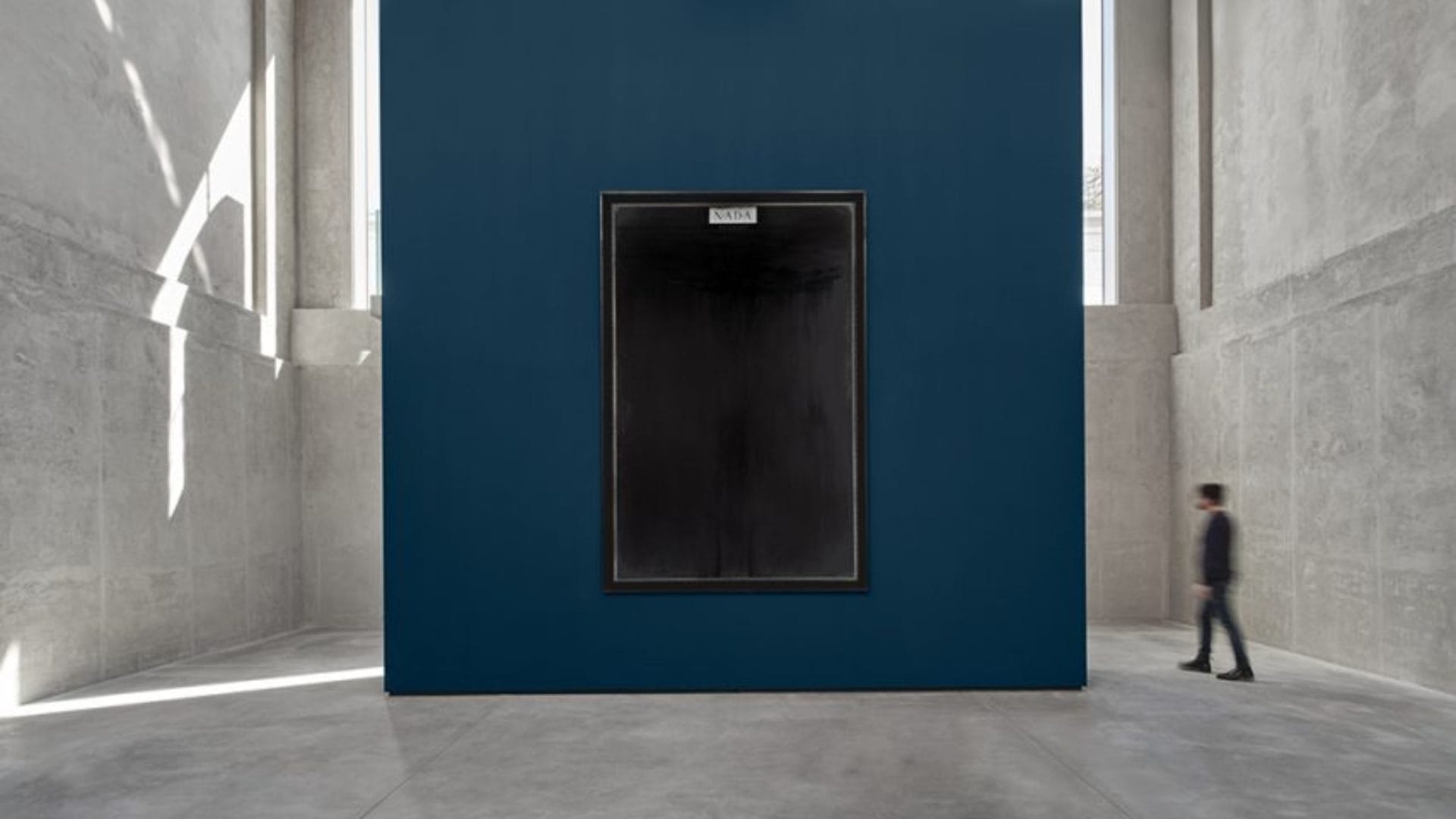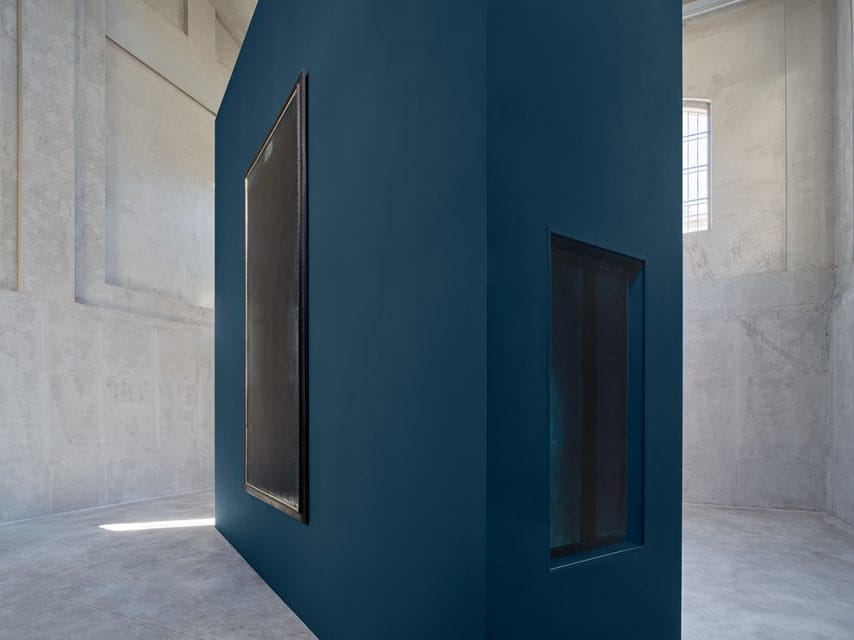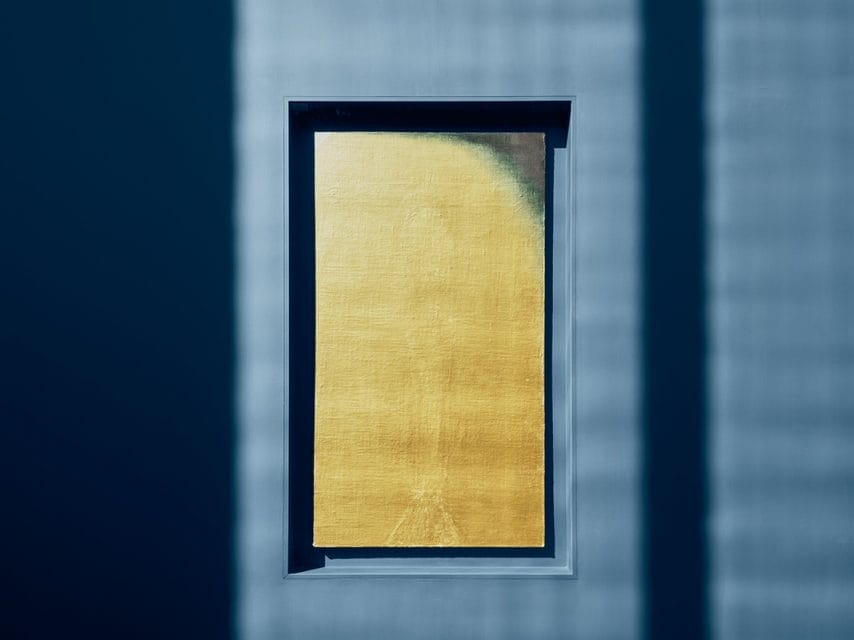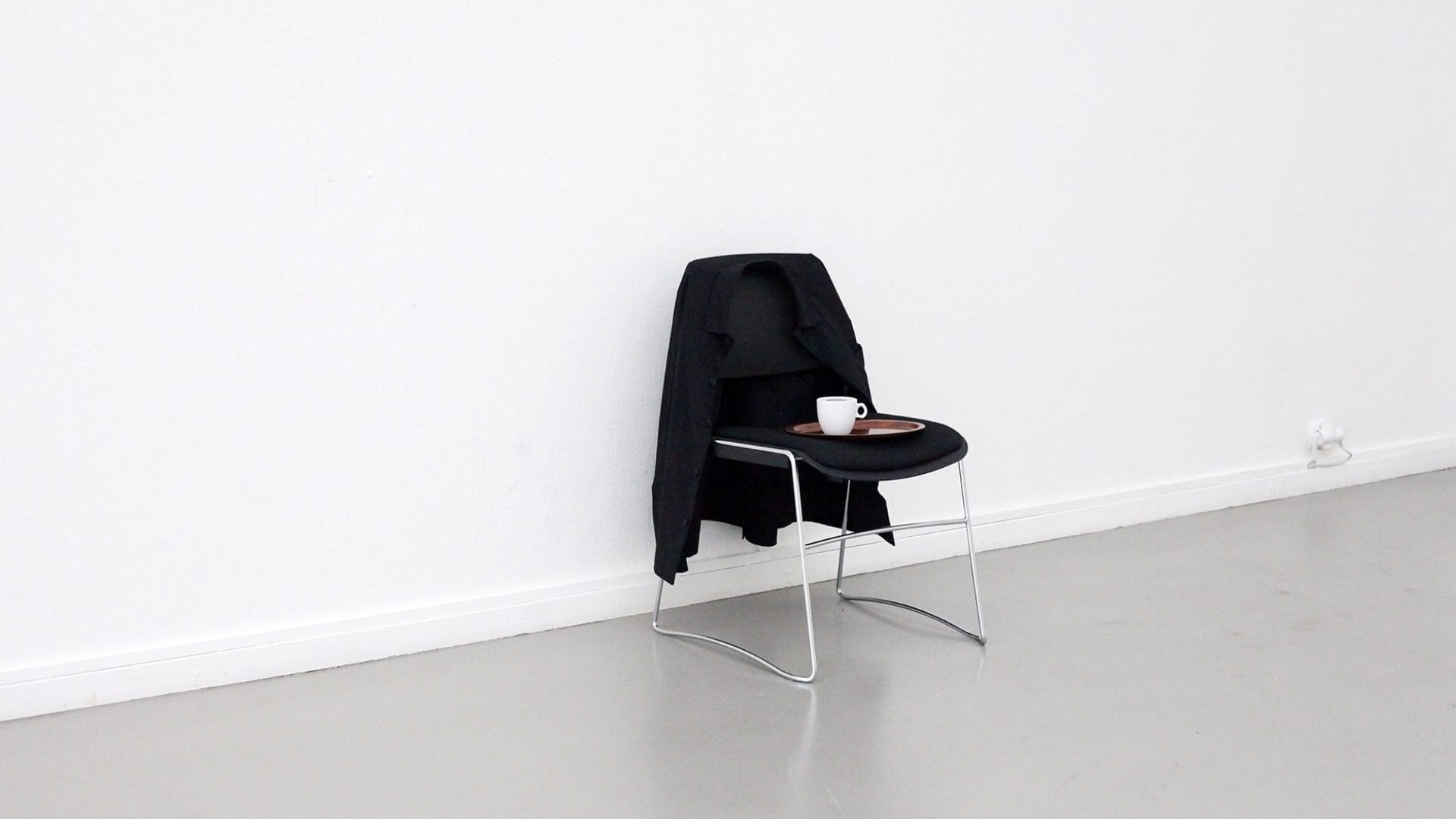
Liturgies of Black: Thierry De Cordier and the Discipline of Absence
The Discipline of Nothingness
There are exhibitions that present artworks, and there are those that present thresholds. NADA, the monographic project by Belgian artist Thierry De Cordier at Fondazione Prada’s Cisterna in Milan, belongs entirely to the latter. It does not offer paintings to admire, interpret, or decode, it offers an abyss to lean into. A silence so dense it becomes audible. A kind of void that does not diminish, but expands.
Ten monumental black canvases, created over the course of two and a half decades, inhabit the vertical spaces of the Cisterna like silent monoliths. They do not speak. They don’t even whisper. And yet they insist, they stay, they hold, they resonate. I spent time with them, and time itself seemed to unravel in their presence. They do not allow for distraction. They are not made for the quickened eye. They demand not our attention, but our surrender.
De Cordier has written that his first black painting, now destroyed, was conceived with a singular intention: to erase the image of Christ on the cross. Not to offend or provoke, but to symbolically extinguish an iconographic structure that, for centuries, has dominated the Western gaze. In this gesture of erasure, I sense not destruction, but a form of mourning. Not rebellion, but rigor. A monk-like austerity. A renunciation.

There is something profoundly moving, and quietly radical, in the way De Cordier approaches painting not as creation, but as cancellation. And yet, this cancellation is not empty. It is pregnant with something unspeakable. What begins as negation evolves, almost unwillingly, into an encounter with the sublime. It is no coincidence that this transformation was catalyzed by his reading of Spanish mystic John of the Cross. In the phrase “no emphasis, only absolute rigor,” De Cordier found the key. The paintings ceased to be acts of defiance and became spaces of revelation.
Still, what kind of revelation can emerge from blackness? What kind of knowledge can be accessed when all images are withdrawn?
Standing before Gran Nada, the monumental painting at the center of the installation, I found myself thinking about the limits of visibility. About how much of our world is constructed by what we see, and how fragile that construction becomes when we are faced with something that refuses to show us anything at all. There is, in these canvases, a refusal that is almost ethical. A resistance to meaning. A deliberate suspension of narrative, symbol, form.
And yet, paradoxically, they are not sterile. They do not feel cold. There is a warmth in their density, a breath inside the void. The longer I stood there, the more I felt drawn in, not toward an idea, but toward an experience. Not an answer, but a posture. A way of being in front of something that does not require my understanding, but my humility.

This is perhaps the deepest challenge of NADA: that it asks us to unlearn what we have been taught about art. That it invites us to be present in a space where there is nothing to see, and yet so much to perceive.
The Cisterna itself becomes an active participant in this discipline. With its industrial cathedral-like architecture, its high ceilings and filtered light, it doesn’t simply host the paintings, it frames them as sacral. The exhibition architecture mirrors a triptych: three open structures, each housing a single suspended canvas. Smaller works are placed in alcove-like niches, suggesting stations of contemplation. The entire installation reads not as a sequence of images, but as a ritual space. A kind of anti-church for believers in silence.
I sat on the bench facing Gran Nada for a long while. I thought about the absence of INRI, replaced now with the word “NADA.” A shift not just in letters, but in metaphysics. It is not a proclamation of divinity, but an announcement of its vanishing. And in that vanishing, perhaps, something new begins. Not transcendence, but immanence. Not salvation, but suspension.
In our current era, saturated with visibility and explanation, De Cordier’s black paintings stand as a stark refusal. They do not circulate. They do not entertain. They do not ask to be shared. They mark a return to interiority, not as a romantic gesture, but as a necessary condition for thinking, seeing, and feeling differently.
What remains, after the image collapses? What can painting still do, if it abandons representation?

Perhaps this: it can create a space in which nothing needs to happen. A space where we are released from the compulsion to decode and allowed, instead, to dwell. To listen to the silence. To feel the weight of the void. And to remember, as John of the Cross did, that it is only by embracing the nothingness, the NADA, that we can approach what he called “the only true reality.”
De Cordier does not offer transcendence as escape. He does not aestheticize the void. He holds us in it. Not to punish, but to attune. His paintings are not images. They are atmospheres. Events. Conditions. And in their refusal to signify, they open the possibility of presence, a rare, dense, unmediated presence.
NADA is not an exhibition. It is an initiation. It does not conclude. It continues. Even after you leave the space, its residue stays with you. Like a dark light behind the eyes. Like a question that has no answer, only depth.
fakewhale
Founded in 2021, Fakewhale advocates the digital art market's evolution. Viewing NFT technology as a container for art, and leveraging the expansive scope of digital culture, Fakewhale strives to shape a new ecosystem in which art and technology become the starting point, rather than the final destination.
You may also like
Joe Pease, Peripheral, WUF, Solo Press Showcase, Basel
“Peripheral” by Joe Pease, solo press showcase curated by Fakewhale, WUF Basel 2024, 11/
How to craft an art tribe with open source DNA?
Decentralized Dynamics and Protocols: A New Type of Art Manifesto in the Internet 3.0 Era?” URL fr
Still Making Art Volume Seven, Curated by Aaron McLaughlin at Arti et Amicitiae, Amsterdam
Still Making Art Volume Seven at Arti et Amicitiae, Amsterdam, curated by Aaron McLaughlin, is a mul




